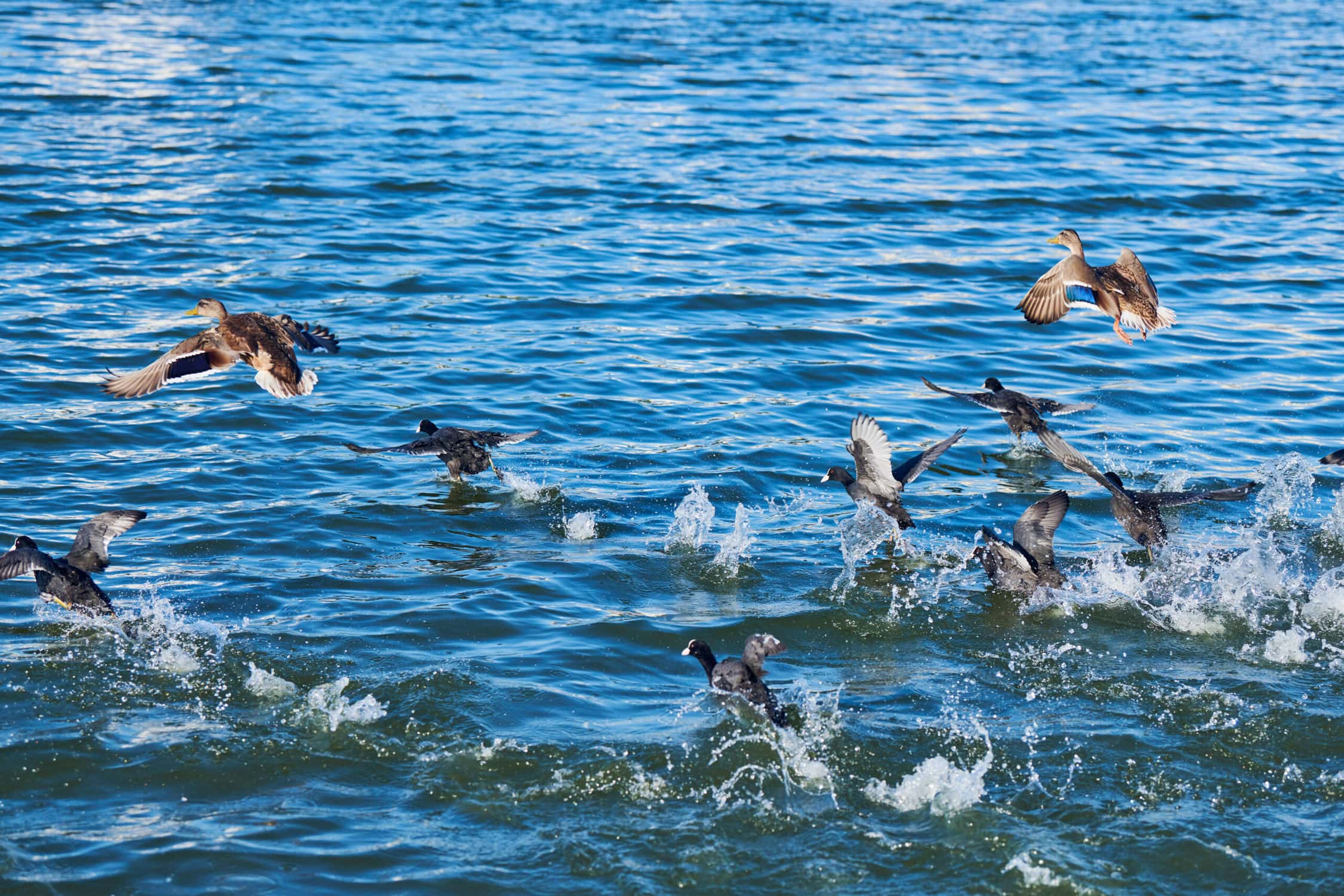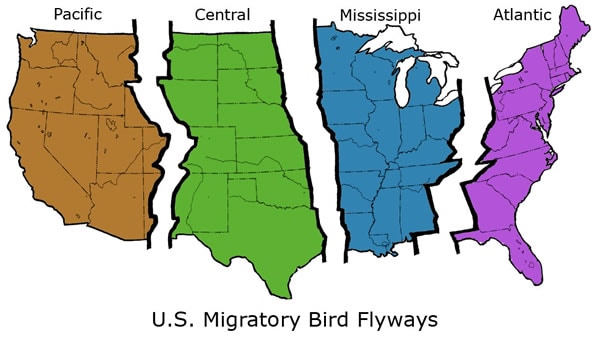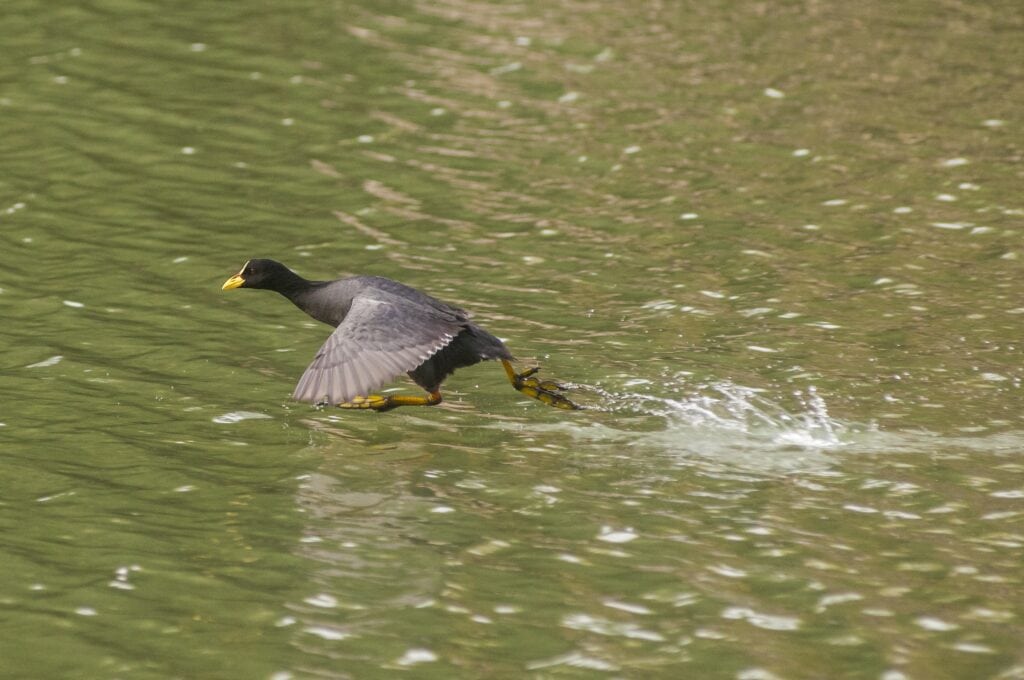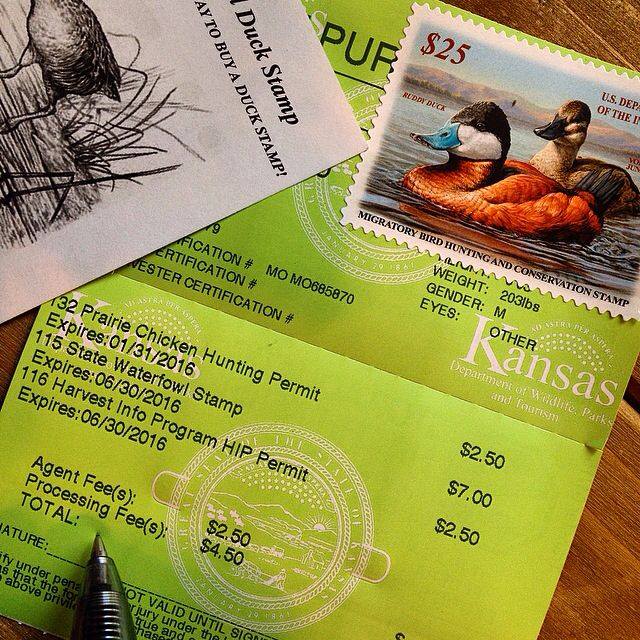
Hunting waterfowl isn’t unlike hunting ducks since ducks actually fall into the waterfowl category. While ducks are waterfowl, not all waterfowl are ducks. There are other species that fall into this category.
In this article, we will discuss the types of waterfowl you can hunt, where to hunt them, and what gear you need.

If you know which section you are looking for, use our table of contents to jump ahead.
Waterfowl Hunting Basics
Waterfowl include bird species that spend the majority of their time in or near bodies of water. These animals often dive or submerse their heads in the water to eat bugs and plants below the surface.
Types of Waterfowl to Hunt
There are 41 species of waterfowl in North America to hunt. These include ducks, geese, swans, and cranes. Here are the types of waterfowl you can hunt.

First, we start with diving ducks/mergansers. These ducks will often have their tails in the air as they dive beneath the surface in search of food. They include bufflehead, ruddy duck, lesser and greater scaup, common, hooded, and red-breasted merganser canvasback, ring-necked duck, redhead, goldeneye, and Barrow’s goldeneye.
Next, we have puddle ducks which include the most common duck, the mallard, as well as, gadwall, wood ducks, northern pintail, mottled duck, fulvous and black-bellied whistling ducks, American wigeon, northern shoveler, green-winged, cinnamon, and blue-winged teals, and the American black duck.
There are several species of ducks you’ll find in salt waters such as surf, white-winged, and common scoters, king and common eider, long-tailed, and harlequin.
Finally, there are swan, geese, brant, and crane species. These include the snow goose, blue goose, Ross’s goose, Canada and cackling Canada geese, white-fronted goose, tundra swan, brant, and sandhill crane.
What is a North American Grand Slam in Waterfowl Hunting?
The North America Grand Slam is bagging at least one of each species listed above. This is a difficult milestone to achieve and not many hunters accomplish it.
However, there are also many smaller waterfowl slams specific to regions or states. This includes common species to the area and usually includes a time limit of either in a day, season, or over a lifetime. These are generally done to promote species identification and you must buy an entry ticket to be eligible. This puts money into the local waterfowl management departments too, which is a win-win for everyone.
Where to Hunt Waterfowl
The easy answer is to hunt the flyways. There are four major flyways in the United States. These north-south routes are part of the yearly migration patterns of waterfowl.

Pacific Flyway
This large area extends 4,000 miles north to south and 1,000 miles from east to west. It spans from the Arctic to the west coast of Mexico and from the Rockies to the Pacific coastline (hence the name). This area draws extremely varied waterfowl and is a great place to find your birds. This runs through the states of Nevada, California, Arizona, Alaska, Idaho, New Mexico, Wyoming, Oregon, Utah, Colorado, Washington, and Montana.
Central Flyway
The Central Flyway covers the middle section of the United States and extends through Canada. It includes, Colorado, Kansas, Montana, Nebraska, New Mexico, North and South Dakotas, Oklahoma, Texas, and Wyoming.
Mississippi Flyway
This flyway does not exist solely in Mississippi, however, it does run along the Mississippi, Missouri, and Ohio rivers. This runs through the states of Indiana, Alabama, Minnesota, Iowa, Louisiana, Arkansas, Illinois, Michigan, Missouri, Mississippi, Kentucky, Tennessee, Ohio, and Wisconsin.
Atlantic Flyway
As you can guess, this flyway runs down the Atlantic coast. This area features the most diverse ecosystems and provides temperate climates for many waterfowl species during cold weather migration. This flyway runs through the states of Connecticut, West Virginia, Rhode Island, Delaware, Vermont, Pennsylvania, Florida, Massachusetts, New York, Georgia, New Hampshire, Virginia, Maine, New Jersey, Maryland, and the North and South Carolinas. As you can guess, this flyway runs down the Atlantic coast.
Knowing where these areas are and when to find the most diverse offerings will help you find the birds you want.

How to Hunt Waterfowl
Hunting waterfowl requires a certain technique, some specialized supplies, know-how, and determination. Your first task is to gather the necessary supplies. And be sure to get your license and tags.

Waterfowl Hunting Rules and Licensing
Most hunting is regulated only by state agencies and while many states have some control over protected species’, hunting seasons and more, waterfowl hunting is actually regulated by the Federal government. This is because these birds migrate across many different states and cannot be regulated by a single state. All hunters over the age of 16 must have the Federal duck stamp to be able to hunt waterfowl.
They also need to check regulations for the individual state where they plan on hunting. States also require a hunting license, HIP (Harvest Information Program) validation, duck stamp (if over 18), and will have bag limits and rules on what can be used when hunting (dogs, calls, ammo types) and hunting hours. Never leave home without proper documentation and knowing what, when, and how you can hunt.
How to Hunt Waterfowl
There are a few techniques for hunting waterfowl. Knowing which one you want to use will determine the equipment you need, where you set up, and more.
Decoy Hunting
Many hunters use decoys, or rather a decoy spread to attract waterfowl to their location. These decoys are set up in the water in a specific pattern and often have some diversity. With this technique, you determine the placement of your decoys and then find a great place to hide and shoot from. Then, you wait.
Pass Shooting
This technique involves knowing when and where the flocks will pass. If you know plenty of waterfowl will fly directly over you, all you have to do is sit and wait, aim, and you’ll have your limit in no time. This requires less equipment and training. As long as you know how to shoot and aim, have appropriate ammo and shooting range, you’re ready to go.

Jump Shooting
If you want to jump shoot, you’ll definitely need to work on your stealth skills. Jump shooting means you will quietly approach bodies of water where waterfowl are sitting. Once in position, you make a sound, and they all shoot up into the air, giving you an opportunity to take your shot. Just be sure to know what type you are shooting at before you alert them to your presence.
Of course, there are other ways to hunt and when you find a technique that works for you, stick with it. For more, visit our waterfowl hunting tips.
Gear for Hunting Waterfowl
Although some equipment is common to all hunting, there are a few specific things you’ll need when hunting for waterfowl.
Must-Have Gear
You don’t have to buy every piece of equipment from the get-go. If you get together with a few other experienced hunters, you can benefit from their gear (calls, decoys, etc) and get a good idea of what fits your hunting style. But, here are some things you can’t leave home without.
Weapon and Ammo
Whether you choose a shotgun or bow for hunting waterfowl, you’ll need to be sure you know at what range you can accurately hit your target. It won’t do any good to shoot at a target that is outside your range. Pump-action and semi-auto 12 or 20-gauge shotguns are typically used for waterfowl hunting. Non-toxic shot is also required for waterfowl and steel is the most popular type.
Wader/Bib
When hunting waterfowl, you are going to get wet. The areas you will walk through are already sloshy but when you get close to the water, you may need to retrieve your kill in the water. Unless you want to walk around soaking wet, you will want waterproof waders or a waterproof bib to keep you dry and warm.
Clothes
You need clothes for almost any activity. So that’s a given. However, waterfowl hunting means hunting in cold, damp conditions some of the time. Early mornings and late evenings can chill you to the bone, so wear layers you can easily shed when the temps climb.
You also need to wear camo. If you don’t, the birds will see you and it is unlikely you’ll get them close enough for a shot. This includes covering your head and hands too.

Blind or Cover
Now, you can get a good blind for this, or you can find a place where you can blend into the natural landscape. Either is an option, just be sure you don’t stick out like a sore thumb.
Boots
Your boots need to be 100% waterproof (usually rubber) and go up to your knees. Again, wading into water, traipsing through mud and muck. If you want to have some level of comfort for your day of hunting, these are a must.
Calls/Decoys
Again, if you can get together with a group of hunters, you may not need these right off the bat. Some areas do not let you call either, so know the laws before you go out and buy something you can’t even use.
For starter decoys, get a half dozen and learn how to set them up. If you do get a call, practice, practice, practice. You don’t just blow into a call and instantly get a perfect waterfowl sound. So learn how to use it before you head out.
Choke Tube
Choke tubes change how your ammo exits the gun, giving you a wider or narrower shot pattern (depending on your choke). This can mean the difference between a wounded bird that flies away and a fatal shot.
It is also a good idea to carry a blind bag with all your additional supplies, licenses, and more inside. Dogs to retrieve your kills are also helpful and keep you out of the water and ensure you can retrieve the kill even from deeper water.
Conclusion
Hunting waterfowl is rewarding and can provide you with trophies, meat, and more. If you still aren’t sure how to start or want to find out about your specific area, visit a local hunting store or Waterfowl Management Department for some additional help.

Unlike larger game, where you’re one and done, hunting waterfowl can allow you to target many birds and//or species in a single day. Just watch your bag and possession limits which can throw you for a loop if a ranger stops by. Hunting in a group is generally a good idea for a variety of reasons but hunting alone is doable too. Have fun out there!

Big Game Logic is a participant in the Amazon Services LLC Associates Program, an affiliate advertising program designed to provide a means for us to earn fees by linking to Amazon.com and affiliated sites. Pages on this site may include affiliate links to Amazon and its affiliate sites on which the owner of this website will make a referral commission
